Best Time to Post on Twitter to Boost Engagement (2022 Guide)
What does it take to get more brand awareness on Twitter?
Like any other social media channel, Twitter requires consistency, which means your strategy won’t deliver results without a proper posting schedule.
But here’s the thing – the Twitter Analytics page is not as helpful as Facebook Insights, for example, and doesn’t share a graph with audience activity.
So, what should you do? How can you figure out the best time to target your followers?
No worries – we’ve collected all possible insights on building a Twitter schedule.
Let’s jump right in.
Does Posting Time on Twitter Matter?
In short, yes, time matters a lot. Let’s figure out why.
First and foremost, consider the Twitter algorithm. If you’re a Twitter user, you know that all the posts appear in reverse chronological order (after the 2016 update). In other words, the latest tweets appear at the top.
So, why does it matter for your posting schedule?
That’s easy – tweets appear as users post them. However, new posts can replace them very quickly, and your tweet is at risk of getting lost. As a result, its visibility will be minimal.
However, knowing exactly when your followers log in to their Twitter accounts and check the feed increases the chances of your tweets getting discovered.
It’s also worth mentioning that Twitter is a pretty competitive social network. It is primarily informational and exists to share the news. So, the speed with which new tweets appear in the feed is relatively high. Therefore, knowing when to schedule your posts helps outcompete your rivals.
Early visibility and competitiveness are not the only reasons to optimize your Twitter content plan based on audience activity. Scheduling tweets to appear at the right time also brings you closer to your audience.
Think about this – content is one of the main reasons people follow you on Twitter. They care about what you have to say and know you share high-quality posts. And they probably want to see more of that from you.
So, imagine the amount of engagement posting a tweet at the right time can bring.
In general, the importance of audience activity is what makes social media marketing different from traditional marketing. After all, when the billboard ad is up, it’s as relevant in the morning as it is at night; the only thing that matters is that it’s in the right location.
However, if you don’t make a post at the appropriate time on social networks, it will get lost in the myriad of other content pieces.
When’s the Best Time to Post on Twitter?
On average,the best time to tweet is on a workday between 11 AM and 1 PM for each time zone. The best day is Wednesday and the weekend – these days bring the highest click-through rates (all this data comes from Buffer’s own research).
Let’s get into the details.
According to Buffer, the biggest volume of tweets occurs between 11 AM and 1 PM and is significantly lower between 3 and 4 AM. These are the numbers from worldwide research.
If we take the United States in particular (EST, CST, and PST time zones), the situation is slightly different. The Twitter activity starts peaking at 8 AM and reaches the highest point at 11 AM. Interestingly enough, it still remains pretty solid at 4 and 5 PM.
Wondering about Europe? The best time slot to post is between 9 AM and 5 PM, so, basically, you have the whole day of high Twitter activity.
Finally, Asia and Australia should schedule their posts at 8 AM, 12 PM, 5 PM, and 8 PM. The worst time to post in this region is early morning at 4 AM.
What do other studies say?
The research by Sprout Social, which we mentioned in our Best Times to Post on TikTok article, shows the following peak times:
- Monday: 9 AM to 1 PM
- Tuesday: 8 AM to 2 PM
- Wednesday: 8 AM to 5 PM
- Thursday: 9 AM to 1 PM
- Friday: 9 AM to 1 PM
- Saturday: 9 AM to 11 AM
- Sunday: 9 AM to 1 PM
As for the best times and days out of this list, Sprout Social says it’s better to schedule your posts on the weekdays before noon: Tuesday 9 AM to 12 PM, Wednesday 9 AM to 3 PM, Thursday 9 AM to 11 AM, and Friday 9 AM and 11 AM. Unlike Buffer, this source doesn’t recommend posting tweets during the weekend but rather during work hours.
In comparison, the study by Hootsuite we also referenced in our above-mentioned content piece says the best time of day to post on Twitter is during a workweek on Mondays and Thursdays at 8 AM.
It’s also worth mentioning that different industries have different best times and days for tweets. For instance, the study by Sprout Social we investigated earlier provides insights into the days and times bringing the highest engagement for the following industries:
- Healthcare: Monday from 9 AM to 12 PM, Tuesday from 8 AM to 1 PM (Saturday is the worst day of the week).
- Media: Monday 6 and 9 AM, Tuesday 7 AM (Saturday is the worst day).
- Education: Monday between 6 and 9 PM, Thursday at 10 AM (Sunday is the worst day).
- Nonprofit: Wednesday between 10 and 11 AM and 2 and 4 PM (Sunday is the worst day).
- Hospitality: Wednesday between 12 and 2 PM, Thursday from 8 AM to 2 PM (Saturday is the worst day).
- Tech: Monday at 11 AM, Tuesday and Wednesday at 9 AM (Sunday is the worst day).
- Tourism: Monday from 10 AM to 2 PM, Wednesday between 8 and 9 AM (Saturday is the worst day).
From these examples, we can conclude that weekends are not generally the best for making a Twitter post.
Why is the data from all these studies so conflicting?
The most important point here is the time zone in which this research took place. Even though Buffer investigated different time zones worldwide, their results are just average estimations. The same is with Sprout Social and Hootsuite.
Apart from that, the scope of these studies is limited. For instance, Buffer tells us that it has analyzed 4.8 million tweets. It’s enough to deliver some results, but will they be conclusive? Of course, not.
So, how do you figure out your own perfect time to tweet?
Twitter Analytics has all the answers, although there is no specific metric that indicates audience activity, like in Facebook Insights, for example. We will tell you how to determine the best time for your tweets in the next section.
What about other social media platforms? Do they have their own popular times and days to post?
Yes, they do. Here’s the list of peak hours and days (we already shared a similar one in our article about TikTok):
- Facebook: Tuesday, Wednesday, Friday from 9 AM to 1 PM.
- Instagram: Tuesday, from 11 AM to 2 PM.
- LinkedIn: Tuesday, Wednesday, Thursday from 9 AM to 2 PM.
Again, these are estimates. It is better to rely on your own audience activity data to find the best time to schedule a post for your brand.
However, if you’re new to social media and don’t really have a considerable number of active users, here’s a graph with the best times to post on Twitter:

This graph will help you create a draft of your content schedule for Twitter, which you can alter and tweak based on your account-specific information.
Identify the Best Time to Post on Twitter in 4 Simple Ways
Knowing the data from various studies helps you better understand the behavior of Twitter users. However, it’s not a 100% reliable way to build your content schedule. After all, these pieces of research provide average numbers only.
So, is there a way to find out the best time to post on Twitter?
Yes, although all of them are indirect. We already mentioned that Twitter Analytics could help boost engagement. But there are a few other loopholes.
Let’s take a look.
Way #1: Experiment
Determining the optimal time to make a tweet is often a trial-and-error process. It’s very likely that you will have to tweak and modify your schedule several times before it starts bringing engagement.
First, you could try focusing on the audience from your local time zone. Answering the following questions would help a lot:
- When is your local audience active on Twitter?
- What is it doing at a specific time of the day?
- When is the supposed engagement time slot?
Of course, you can’t know for sure when people will check out your tweets, but it could help start your social media strategy with something. Then, after you collect enough audience engagement data, you can make changes to your Twitter posting plan.
Oftentimes, experimenting with the schedule involves modifications to the Twitter marketing strategy. The reason is simple – if your content brings engagement, you must be posting at the right time.
The best way to trace how brands experiment with their social media calendar is to look at an international company. Take PayPal, for example. Its tweets appear every day at 6 PM:

Here’s one more tweet posted a week ago:
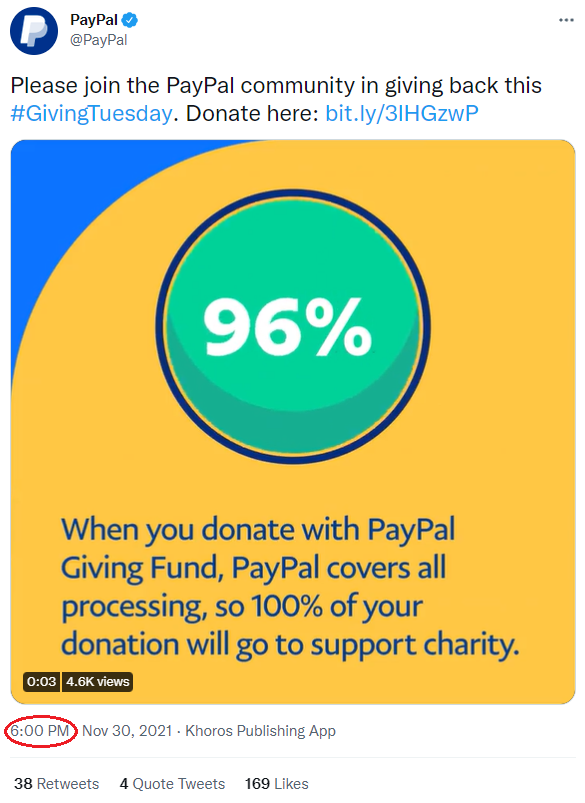
Why does PayPal use this time?
It’s actually very convenient – when it’s 6 PM in Berlin, for instance, it’s noon in New York. Thus, it helps PayPal reach its global audience using this timeslot.
Way #2: Use Twitter Analytics
Even though Twitter Analytics doesn’t provide direct insights into your audience’s activity log, you can still crawl it to get a general idea.
Here’s how to do it.
Go to Twitter Analytics, which is under the More section on the main page:
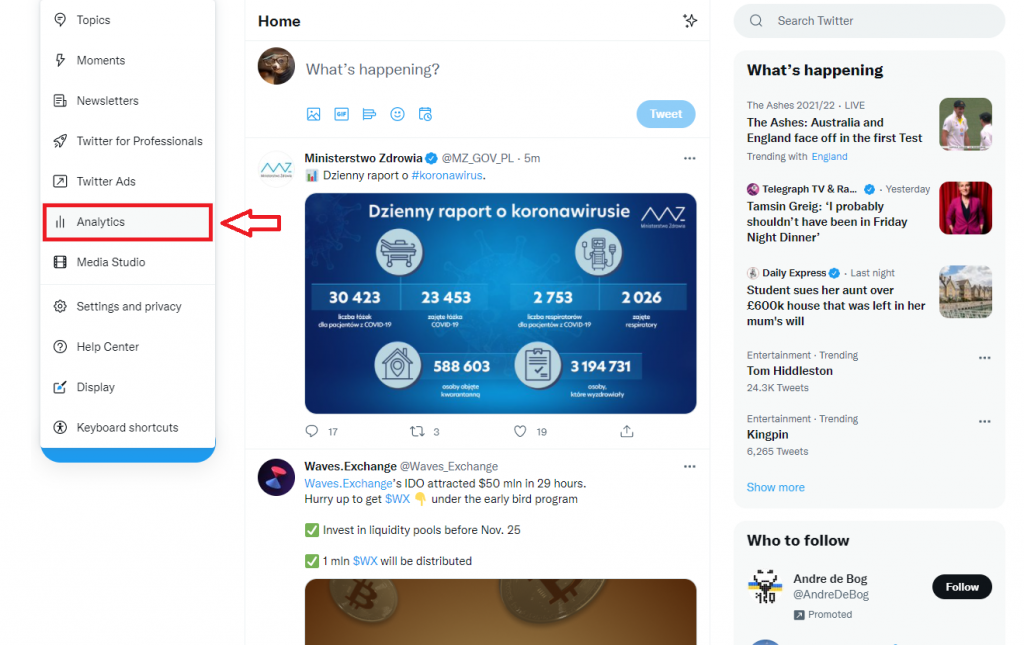
Next, you’ll end up on the page with data collected from your Twitter profile. Your task is to go to the Tweets section and select the timeline to review your tweet activity:
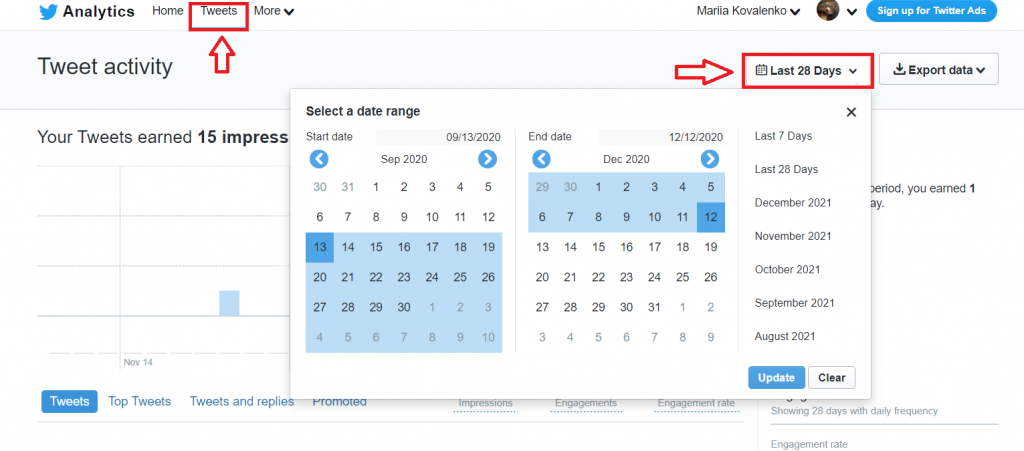
When you hit the Update button, it will show you all the impressions you’ve earned within the preset time frame:
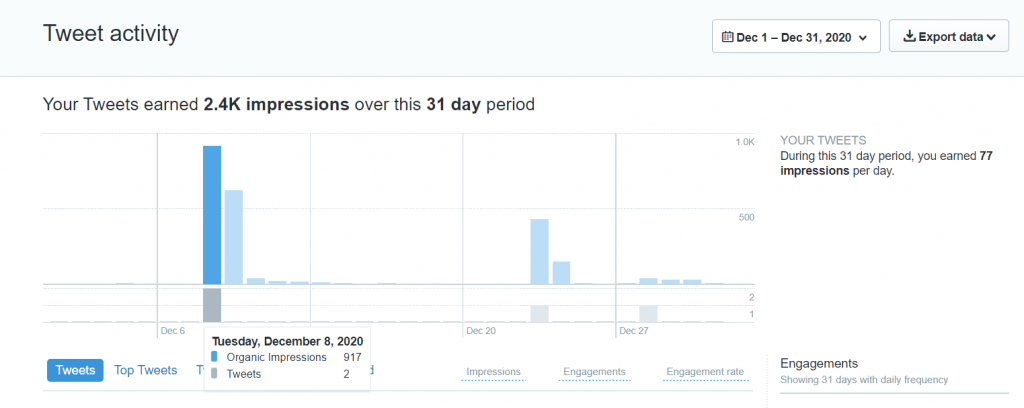
Then, you can review all the tweets you’ve made within that time slot and see the most engaging content types:
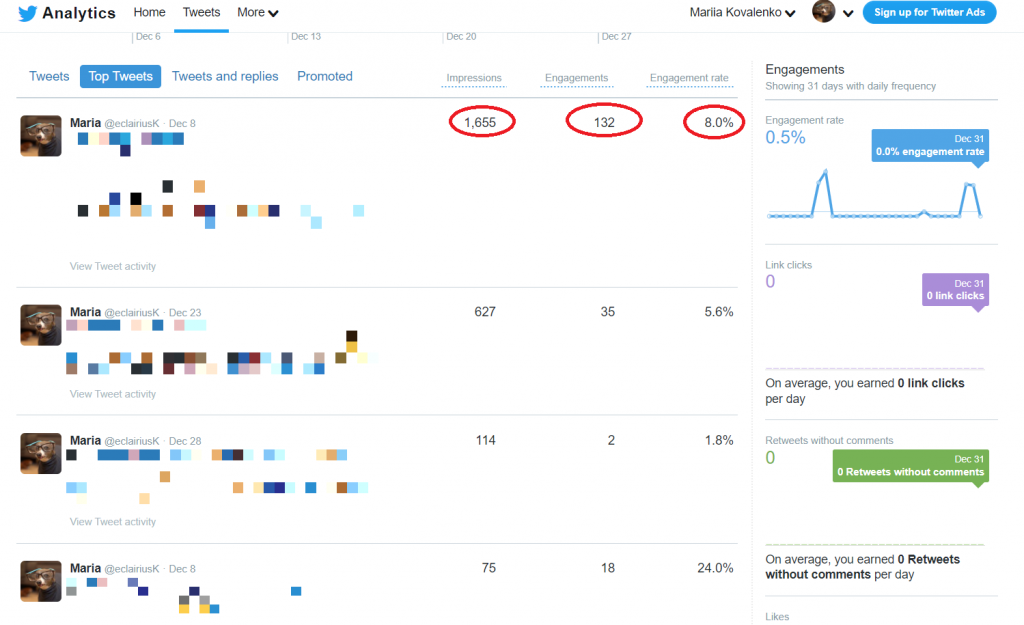
Finally, you can click on the best-performing content and see when you posted it. Hence, it will be your best time to post (approximately).
Can you completely trust this data?
Of course, it would be easier just to have audience activity in one simple graph, but this is the next best thing you could do to select the time to post on Twitter.
If you don’t want to tinker with Twitter Analytics, you can invest in social media scheduling tools. For instance, Hootsuite and its alternatives allow you to see your followers’ activity, Twitter engagement rates, organic reach, and content map templates. These analytics tools include a content calendar that also offers the best time to make a post to drive engagement.
Way #3: Keep track of your posting schedule on other social media platforms
Are you active on other social media websites besides Twitter? You can use social data from them to optimize your Twitter schedule.
Take Facebook, for example. On the Facebook Insights page under the Posts tab, you can see the graph with the follower activity log and monthly active users:
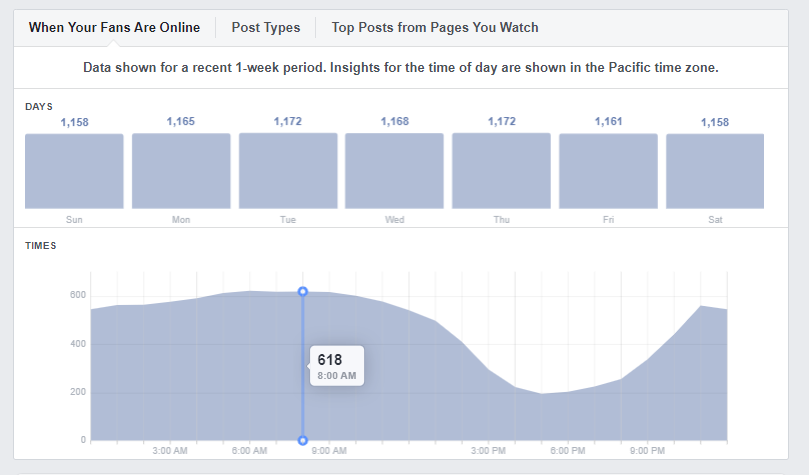
This graph gets updated weekly and reflects the times when people are scrolling through their Facebook Feed.
On Instagram, you can find a similar graph that reflects audience activity:
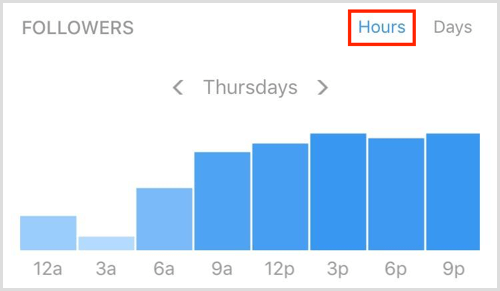
You can switch between days to see when your followers are on Instagram.
Is this approach legit?
We recommend checking if the demographics of your followers on a given social media platform coincide with the demographics of your Twitter audience. If yes, then you are safe to use this data to optimize your Twitter schedule. But it’s better to equip yourself with inbound marketing tools to be sure.
Way #4: Check competitors
Lastly, it wouldn’t hurt to check what your rivals are up to on Twitter. You can go through their Twitter profiles to understand posting frequency. It will be especially helpful if you share audiences with similar demographics.
For example, if you’re in the nail polish niche of the beauty industry, you could check out brands like Holo Taco and Essie. Both these companies focus on the American market.
Holo Taco, for example, tweets at 12:30 EST two times a day on average:
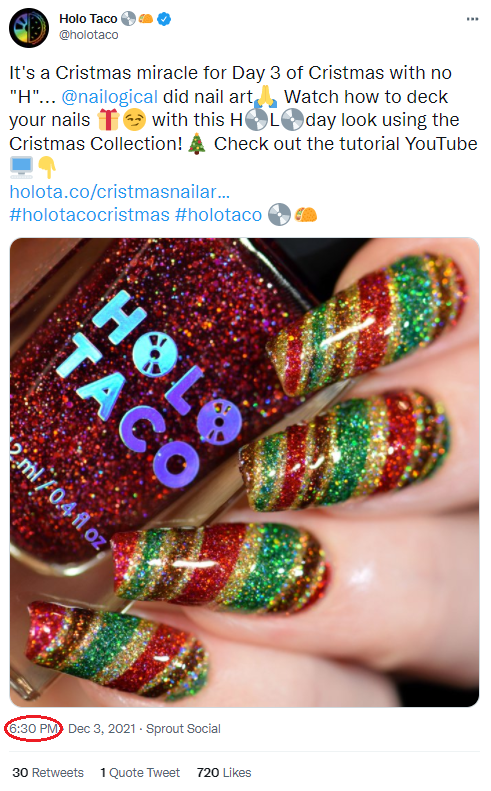
In its turn, Essie posts tweets around the same time as well:
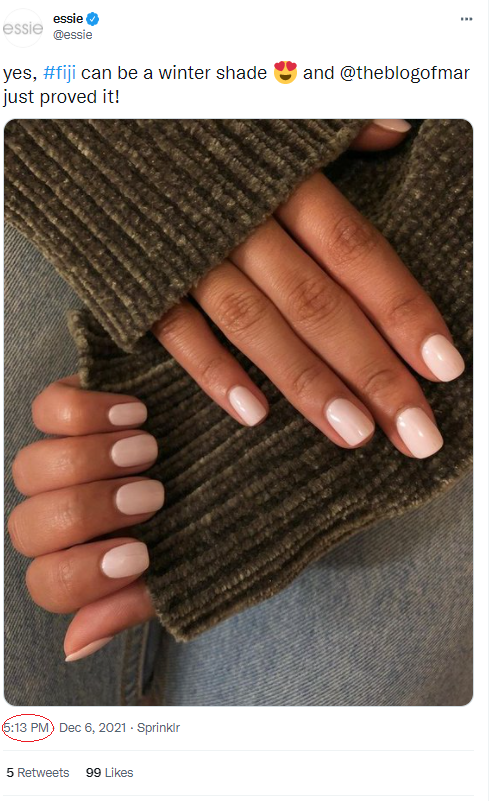
Also, you can see that both brands use social media management tools (Sprout Social and Sprinklr) to post on Twitter automatically.
Alright, now you know how to determine the best posting time on Twitter. However, we’re not done yet. Keep reading to learn more about other factors that impact your performance and could add to engagement.
Bonus: 4 Factors that Boost Engagement on Twitter
Twitter can be a challenging platform to conquer. It’s very competitive – you will hardly find a brand that doesn’t actively tweet, both in B2B and B2C niches. Besides, the content types on Twitter can seem a bit limited, so you need to know how to use them to your advantage.
So, without further ado, let’s consider the four main engagement factors to improve your social media marketing strategy.
Factor #1: Retweets
Brands retweet posts on Twitter all the time. It’s a great engagement booster, increasing brand awareness and visibility on this platform.
Sometimes, such threads can turn into “wars” between brands. Remember the feud between Chick-fil-A and Popeyes for being the best chicken sandwich restaurant?

It was not really a feud but rather a playful argument between two brands. However, the engagement they both got from it is enormous. The above-mentioned retweet alone got 76K shares.
So, this example leads us to the natural conclusion – reposting tweets that mention your brand can bring you more exposure. The reason is simple – it’s a way to lure other brand’s followers to your page and expand your target audience.
Apart from that, retweets help diversify your content strategy. This way, you will always have something to post to keep up with the content schedule.
Factor #2: Profile visits
The times when people visit your profile could help shape your posting schedule. In Twitter Analytics, this data gets updated every 28 days, so you can see the frequency with which new visitors come to your Twitter page:
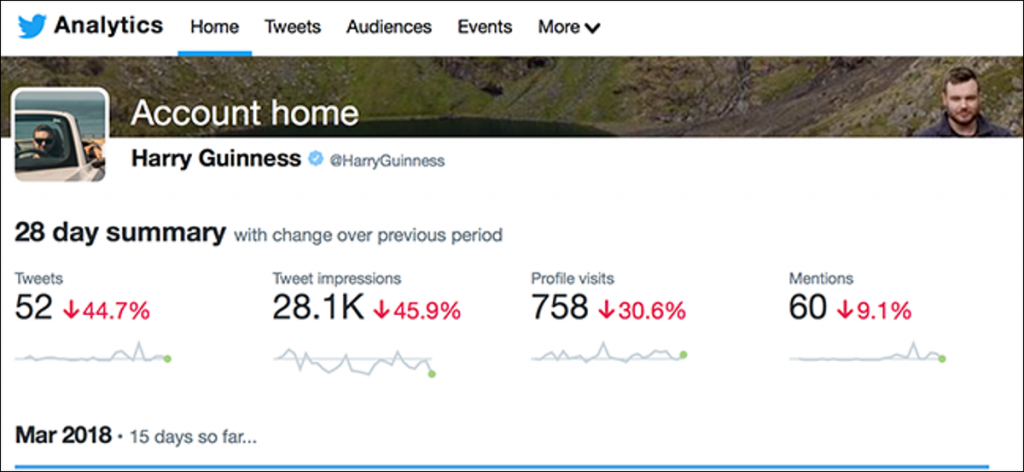
This data could also indicate how often you should tweet. If you see that the percentage of visits has decreased, it’s time to go through Twitter data and consider increasing the number of tweets to drive more visitors to your page.
Besides, it wouldn’t hurt to compare profile visits between the current and the previous 28-day periods. If you saw an increase in visitors before, consider which factor made an impact. Doing the same could bring back the engagement.
Factor #3: Video and photo content
Even though tweets are mostly textual, visual content plays a crucial role in delivering maximum engagement. For instance, did you know that video views on Twitter increased by 62% from 2019 to 2020? People don’t want plain text – they also need the pictures.
Now, how do you pair text with visuals the right way?
The best way is to use text to deliver the news and an image or a video to polish your message. This tweet by NASA is an excellent example of this approach:

If your post leads to your website, you can upload a short trailer with a caption giving a sneak peek into what a user will learn about if they click on the link. This post by SpaceX is an excellent example:
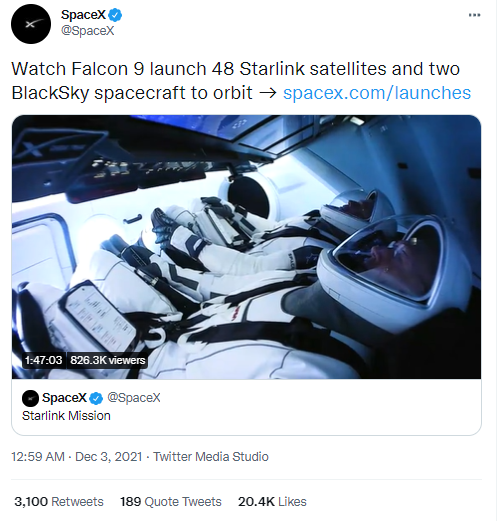
You can also combine visuals and text to get more likes, shares, and comments, but don’t forget that a Twitter video should be no longer than 140 seconds.
Factor #4: Mentions
Finally, when your brand gets tagged on Twitter, it also works as an engagement booster.
How?
A tag brings more people to your profile from the account that mentions you in a tweet. As a result, you get more exposure and visibility.
Tweets with mentions often get solid performance results. For instance, this post by Hubble mentioned NASA and got over 1K retweets and more than 7K likes:
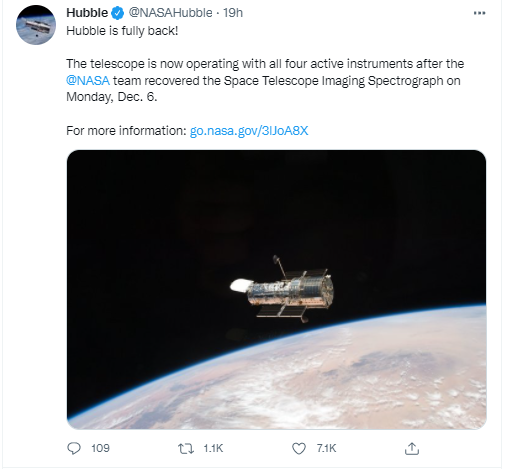
We could assume that NASA’s followers added to this engagement after seeing that the profile they followed got mentioned on Twitter.
One more factor we should briefly talk about involves trending topics. Twitter relies on trends, and you can review the most popular topics and hashtags on a daily basis:
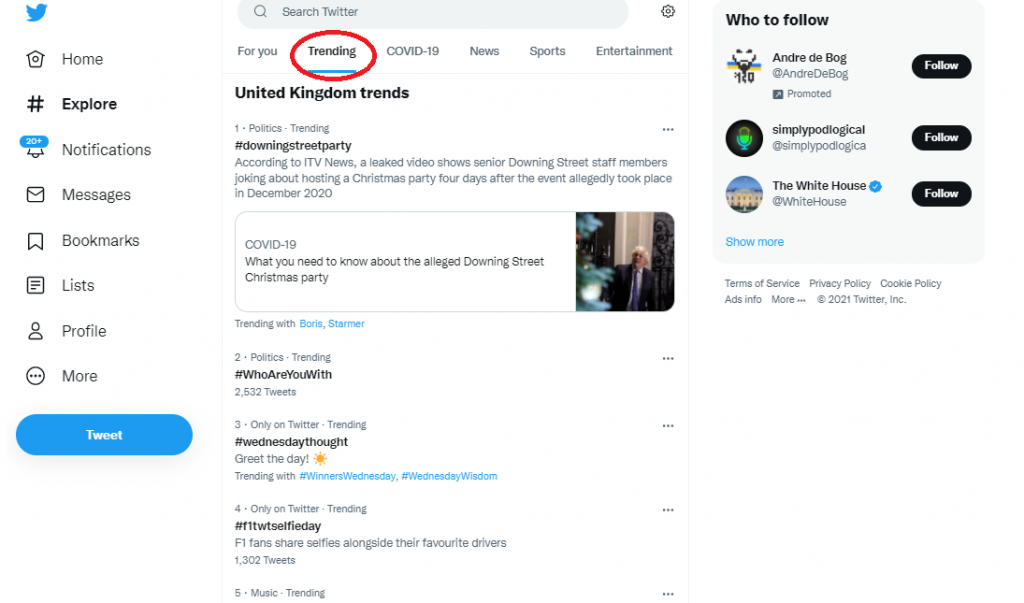
If you consistently check this page for trends, it could help your brand stand out. When you see a topic gaining momentum and people discussing it continuously for several days, it might be a good idea to weigh in on the subject.
Surely, the trend should be relevant to your niche and industry. If you manage to catch a popular topic and use it to bring higher engagement, it could even help you go viral. So, keep a sharp lookout.
Now Over to You
We can agree that figuring the right time to post on Twitter is a real challenge. Even though there are a few reliable studies you can use to create a schedule, the data they provide could turn out not to be relevant for your brand.
If this is your case, you need to do your own research. Go through the Analytics on Twitter, compare data from several social platforms, learn from your competitors, and experiment.
Do you have no time to beat around the bush?
In this case, it’s better to purchase a subscription to a social media marketing automation solution. It will supply you with the necessary data to create a Twitter content schedule that delivers engagement.
Hopefully, our takeaways will help you build a successful posting strategy. If you want to learn more about social media marketing, visit our blog – it has plenty of great insightful content pieces.

Mariia is a content strategist and editor at Digital Marketer’s World. She is passionate about educating others on all things marketing and believes in the power of the written word.
